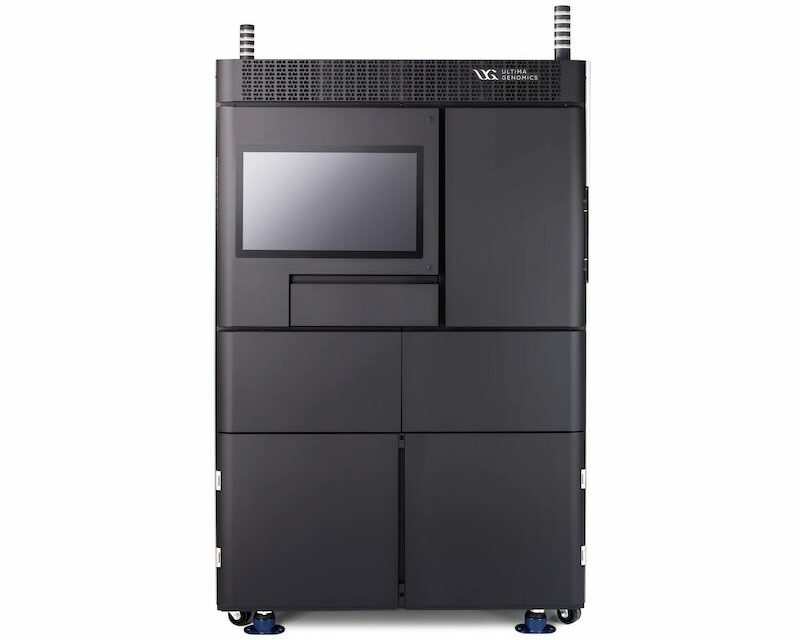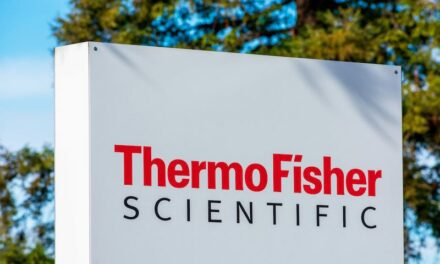Ultima Genomics, the developer of a new ultra-high throughput sequencing architecture, will unveil the launch and full commercial availability of its new ultra-high throughput sequencing system at the upcoming Advances in Genome Biology and Technology (AGBT) conference on Feb. 5, 2024.
The UG 100 system—purposefully built for high-volume applications—is Ultima’s first commercial product, and leverages a unique sequencing architecture featuring an open silicon wafer to replace multiple traditional flow cells and enable the $100 genome and beyond, according to the company.
The system features full 24/7 run automation, flexibility for smaller and significantly faster runs, high accuracy for germline applications, and an extreme accuracy mode for somatic applications and rare event detection, Ultima Genomics says.
“After much anticipation, we are excited to publicly announce the full commercial availability of the $100 genome at the upcoming AGBT conference in February,” said Gilad Almogy, Founder and CEO of Ultima. “When we designed our new sequencing technology, we took on the considerable challenge of creating an entirely new architecture that addressed key shortcomings faced by sequencers today. Not only does our platform enable the $100 genome and a roadmap beyond, but it also enables extreme accuracy and features our proprietary ppmSeq technology for applications where it is needed most. Given the significant departure from the status quo, we wanted to work in partnership with our large customers through an early access program to mature the technology and prove its advantages in large applications. We would like to thank our early access partners for their collective efforts in helping us to make the UG 100 and the Era of the $100 genome and beyond a reality.”
Ultima Genomics’ Developing UG 100
Since exiting stealth mode and unveiling the $100 genome at AGBT in 2022, Ultima has been continually improving its system through a robust Early Access program. Ultima has partnered with many leading laboratories spanning large genome centers and core labs, centralized CLIA labs, biotech companies and academic centers to mature the technology.
“We have seen the evolution and maturation of the UG 100 from its early stages up to commercial launch and have been impressed by the improvements in accuracy, reliability, and productivity,” says Stacey Gabriel, executive vice president of Platforms and Scientific Execution at Broad Institute of MIT and Harvard. “The system’s attributes will be applicable to large-scale programs in our production environment, and we are now deploying the commercial UG 100 in our commercial operations.”
The UG 100 platform incorporates several significant hardware upgrades to improve instrument robustness and usability, automation capabilities to provide 24/7 run automation for productivity, coupled with enhanced chemistry and analytics for faster run times and improved accuracy,” according to the company. This commercial version of Ultima’s sequencing platform will also include a new ppmSeq technology that provides industry-leading raw read accuracy for calling single nucleotide variants (SNVs) for rare event detection applications like detecting low-level circulating tumor DNA.
“We are excited by the unique approach that Ultima took with its technology and the work their team has done to advance the technology for launch,” says Dan Landau of The New York Genome Center. “Due to its significant departure from legacy approaches, Ultima’s technology has unique advantages that overcome challenges of traditional sequencing approaches. Ultima’s ppmSeq technology, for example, can be transformative for a variety of somatic applications requiring extreme SNV accuracy, such as cell-free DNA and liquid biopsy. We are deploying Ultima’s technology towards a variety of applications spanning cell-free DNA, liquid biopsies, whole genome sequencing and other omics and counting applications.”
In addition to the product improvements made during Early Access, Ultima has also established partnerships with several leaders across the industry to improve the workflow and provide multiple sources for upstream library preparation reagents as well as streamline downstream analysis designed specifically for Ultima’s technology.
Further reading: CAP Molecular Proficiency Testing Programs Show Accurate Clinical Cancer Sequencing Results
“We are entering an exciting time in biology and medicine, where AI and low-cost sequencing will enable population-level studies, improved diagnosis of disease, and planetary-scale experiments that were impossible only a few years ago,” says Chris Mason, PhD, professor of Physiology and Biophysics at Weill Cornell Medical College. “With Ultima’s new sequencing technology, we are able to turn these visions into reality, and with its commercial release, we are excited to be able to access the platform in the field to think bigger about how we deploy genomics on Earth (and in space) to accelerate our understanding of biology and advance precision medicine.”
Ultima will be introducing the UG 100 and will be providing additional information about its ppmSeq technology on February 6th at the AGBT conference as part of its Gold Sponsorship plenary presentation.
Featured image: The UG 100 ultra-high throughput sequencing system. Photo: Ultima Genomics




